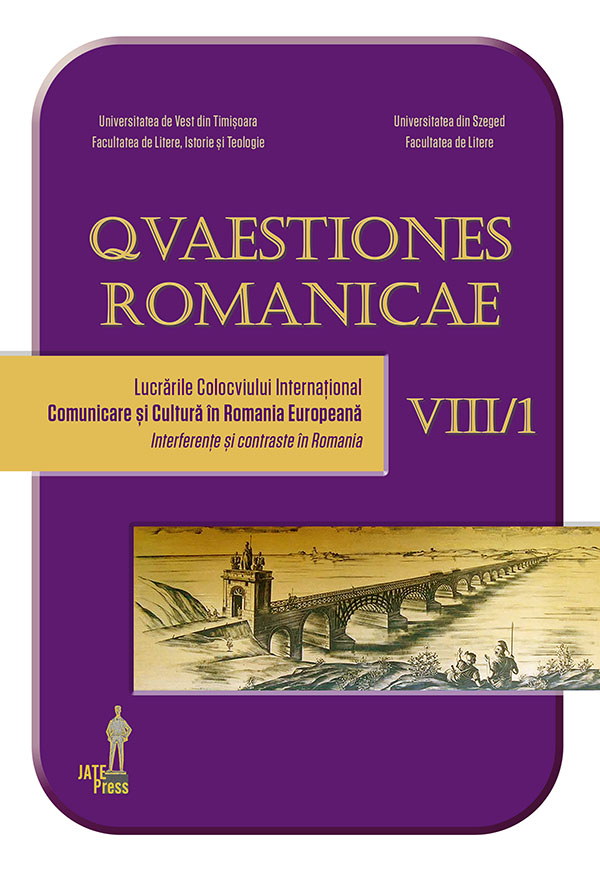„Noi nu suntem urmașii Romei”. Les interférences identitaires dans l’espace roumain au prisme de l’histoire et de l’archéologie, du XIXe siècle à nos jours
Abstract: („Noi nu suntem urmașii Romei”. Identitary Interferences in the Romanian Lands through the Lens of History and Archaeology, from the 19th Century to the Present Day) The issue of identity has always played a considerable role in Romanian culture and it has constantly aroused interest among the numerous scholars who have been working on this subject. Thus, the search for the origins of the Romanian people – their ethnogenesis – has been lying at the very heart of the discussion for several centuries. Indeed, it is from the 16th century that Moldavian chroniclers mention and claim the Latin origin of both the Romanians and their language. This assertion will be continued by the Transylvanian School at the turn of the 19th century and overly magnified by the Latinist movement. Then, we are witnessing a turnaround in which the Dacians begin to be taken into consideration both from a literary and historic perspective. The peak of this interest for the Dacians is attained once Nicolae Densușianu publishes “Prehistoric Dacia”, the Bible of the Protochronists, that mixes mythology, folklore, linguistics and history. The enthusiasm for the Dacian origin did not diminish in the following decades and it is here that the question of defining the “national specific” – torn between Romans, Dacians and Slavs – arises. That is why we aim at studying, especially in the light of archaeology, in what way these contrasts are articulated and how the intellectuals have been attempting either to combine them or to oppose them against each other.
Keywords: Dacians, instrumentalisation, archaeology, Latinity, disparities.
Résumé: „Noi nu suntem urmașii Romei”. Les interférences identitaires dans l’espace roumain au prisme de l’histoire et de l’archéologie, du XIXe siècle à nos jours. Le thème de l’identité a toujours joué un rôle prépondérant dans la culture roumaine et a constamment éveillé l’intérêt des nombreux savants qui se sont penchés sur ce sujet. Ainsi, la recherche des origines du peuple roumain – son ethnogenèse – a très souvent été au centre des interrogations et ce, depuis plusieurs siècles. En effet, c’est à partir du milieu du XVIIe siècle que les chroniqueurs moldaves Grigore Ureche et Miron Costin évoquent et revendiquent l’origine latine des Roumains et de leur langue. Cette affirmation va être reprise par les membres de la Școala Ardeleană au tournant du XIXe siècle et amplifiée jusqu’à l’excès par le mouvement latiniste. Ensuite, on assiste à un retournement de situation dans lequel les Daces commencent à être pris en considération, tant du point de vue historique et littéraire qu’archéologique. L’acmé de cet intérêt pour les Daces sera l’ouvrage de Nicolae Densușianu intitulé Dacia preistorică qui mêle mythologie, folklore, linguistique ou encore histoire et qui est la Bible des protochronistes. L’engouement pour les Daces ne va plus se démentir dans les décennies suivantes et c’est là que va se poser la question de la définition du « spécifique national » tiraillé entre les Romains, les Daces et les Slaves. C’est la raison pour laquelle nous nous proposons d’étudier, notamment à la lumière de l’archéologie, de quelle manière s’articulent ces contrastes et comment les intellectuels tentent soit de les combiner, soit de les opposer les uns par rapport aux autres.
Mots-clés: Daces, instrumentalisation, archéologie, latinité, disparités.
